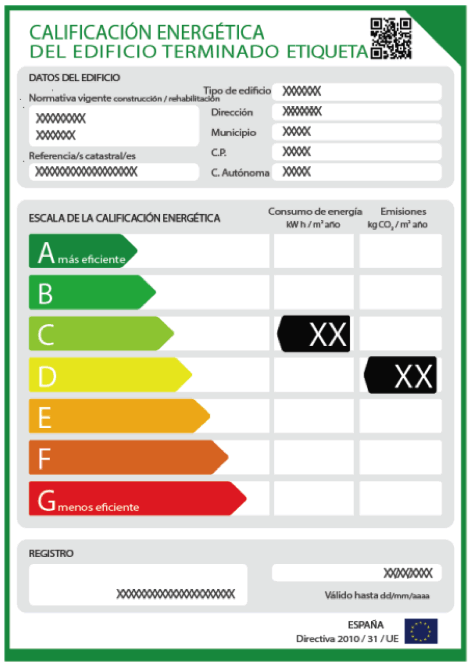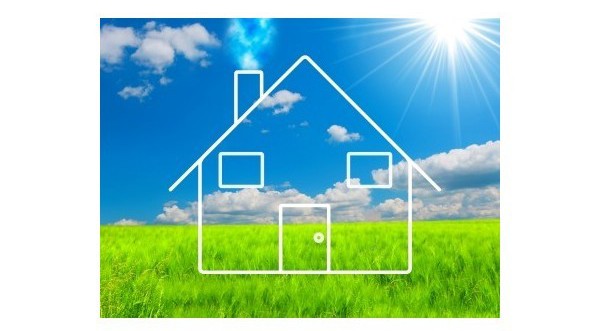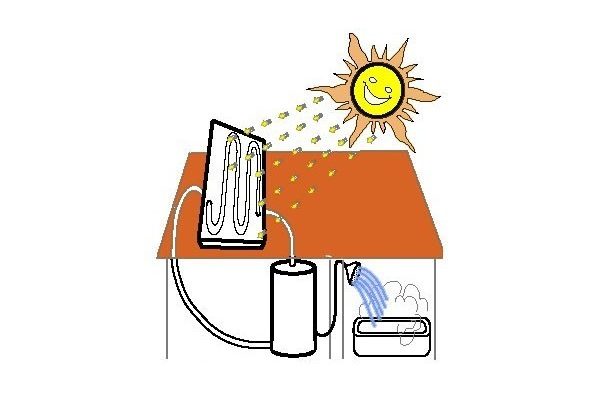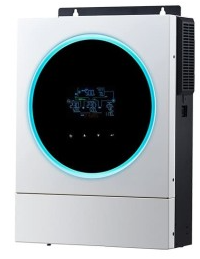The Spanish housing suspended in Energy Efficiency. According to the Institute for Energy Diversification and Saving of Energy (IDAE) over 73% has a very low efficiency.
The legislation implemented in recent years by European Directive obliges the housing since June 2013, to have an energy performance certificate. An energy rating that provides housing a label, such as appliances, with a letter between A (high efficiency) and G (very low efficiency).

The study by the IDAE indicates that most households receive a failing grade, over 85% are E, F or G, where E is 45% and G 28%. Just 4.3% are A, B and C, with good or very good rating.
The disastrous outcome of these statistics shows how little we care about energy efficiency. But otherwise yes we care spending we do in the various supplies.
But what measures the energy rating?
The energy rating system measures the degree of energy efficiency based on the use of (non-renewable) primary energy and CO2 emissions, which are derived from associated water heating, heating and cooling, ventilation and lighting consumption.
A better primary energy efficiency will use less power (less euros on our invoices) and less CO2 associated with our consumption. For example, a house of 90 m2 with energy rating E consumes about 1,000 per year in energy.
The importance of obtaining a rating or other lies in knowing how much I will save, or force me to spend, a home in their use over the years. This information is not yet sufficiently valued, which means that if I have a home energy rating better able to sell at a higher price.
Because the system is relatively recent, gradually we’ll all used to use, but fits indicate that even some banks are beginning to show a lower interest rate on the mortgage if a home is purchased with a high energy rating.
Given the benefits, what I can do to improve the energy rating of my house?
For the usual advice is to change the boiler and windows. But this does not always work.
Since many reports are made companies Madrid, Madrid and heating costs are considerable, it is usually made this recommendation. But if we live on the coast or in a city that is not at 600 meters, and with a more moderate consumption in heating, boiler influence is much lower. And in any case, the recommendation of a condensing boiler is improved by a biomass boiler, which is the best rated for energy rating.
Regarding the change of windows, I must say that in theory between 15% and 35% of the heat escapes through windows. The reality is a little smaller, but it is an improvement that is often noticeable in both heating and cooling. We not only decrease energy consumption by improving energy rating but also improve comfort in our home. The cost is around $ 500 per window, and as important is the quality of the window as well as installing sealing the joints between the window and walls.
In addition to these classics then give three very useful suggestions for improving our energy rating of very profitable way:
- Installing awnings and parasols. In locations with high spending cooling, usually carried out with air conditioning, a very economic measure is the installation of awnings and parasols. For example a horizontal parasol, like a visor in a window, has a regulating effect of energy expenditure. In winter, when the sun is lower it does not affect, as the sun comes through the window warming up the house. In summer, the sun circulates at higher altitudes, causing a shadow at the entrance of the window that helps keep the heat. The reflected light enters the same, but housing is protected from overheating sun. This simple item helps us improve the energy rating.
- LED Lighting Lighting is one of consumption that is measured to obtain the energy rating. According to IDAE 18% of our energy expenditure is spent on lighting. The energy savings in this game allows us to save money and move up in our energy rating. It is not named as can be much more profitable than a change of boiler in many households.
- Use of renewable energies. The implementation of renewable energy is far far more positions allows us to scale in the energy rating and is practically the only one that can achieve a grade A. The reason is easy, all consumption to come from renewable energy removes our consumption of non-renewable energy, which ultimately is what measures the energy rating; to lower consumption higher rating. See the most profitable alternative use of renewable energies in housing in our blog:





